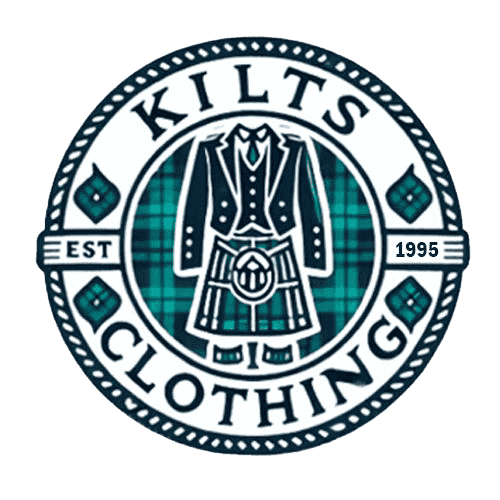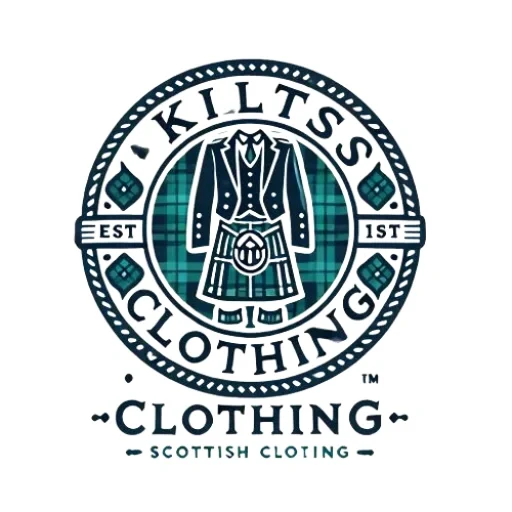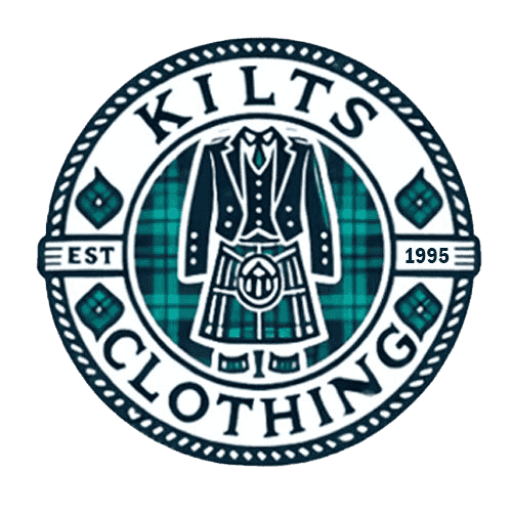Kilt accessories: what accessories are needed with kilt
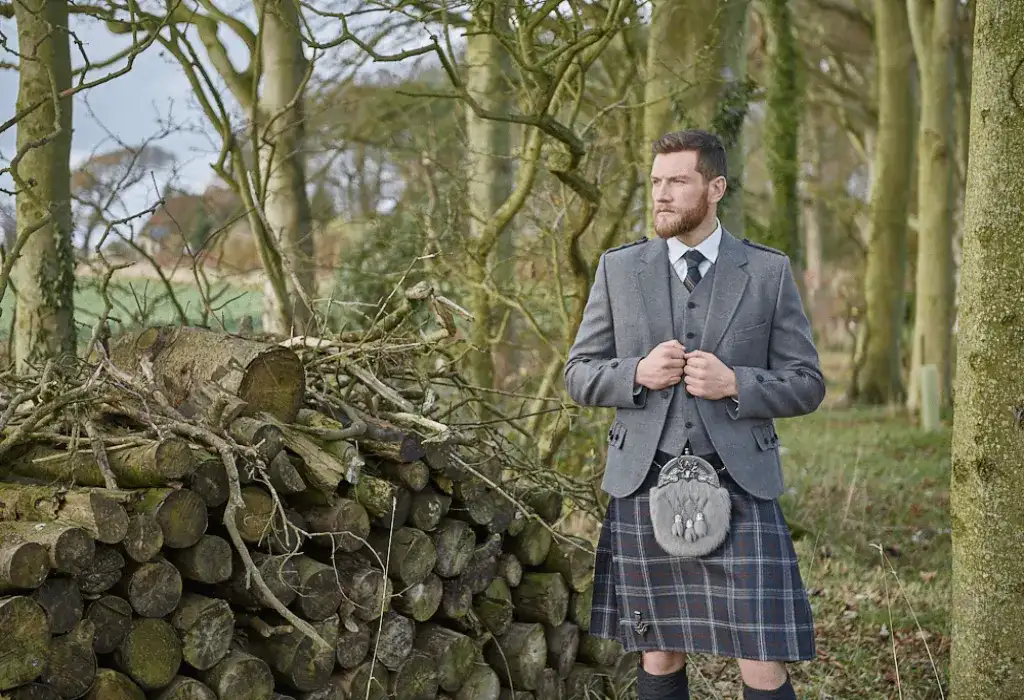
Wearing a kilt is more than just donning traditional Scottish clothing; it's about embracing a rich cultural heritage. With its distinctive tartan patterns, the kilt is instantly recognizable, but to truly complete the look, various accessories are essential.
These accessories enhance the kilt's visual appeal and serve practical purposes, making the entire outfit functional and stylish. This guide will explore the key accessories every kilt wearer should consider to achieve a complete and authentic kilt ensemble.
The Essential Kilt Accessories
The traditional kilt is a garment steeped in history and cultural significance, particularly within Scottish heritage. However, more than the kilt is required to complete the picture of this iconic attire.
Various accessories are essential to fully embrace the tradition and functionality of wearing a kilt. Each of these accessories carries with it a practical purpose and a deep connection to the historical and cultural context in which the kilt evolved.
These accessories, from practical to purely decorative, truly bring a kilt outfit to life. They transform the kilt from a simple piece of fabric into a fully realized ensemble that tells a story of Scottish tradition, identity, and craftsmanship.
The sporran, for instance, compensates for the kilt's lack of pockets by providing necessary space for carrying essentials, all while adding an element of style with its intricate designs and materials.
Similarly, the kilt pin is more than just a functional item to keep the fabric in place; it is often a symbol of personal or clan identity, intricately crafted to reflect the wearer's heritage or individual taste
.Each accessory is imbued with cultural significance, from the Sgian Dubh—a small knife that harks back to a time when carrying such a tool was a practical necessity—to the fly plaid, a large swath of tartan fabric that adds grandeur to formal occasions. traditional Scottish style.
The following are the essential accessories that are traditionally paired with a kilt. Each item plays a unique role in completing the outfit, blending
1. Sporran
A kilt is a beautifully crafted garment, but one of its most notable features is that it lacks pockets. This is where the sporran comes into play. The sporran is a pouch hanging from the waist, serving as a practical storage space and a decorative piece.
Made from leather or fur and often featuring intricate designs, the sporran is an indispensable part of the kilt outfit. There are different types of sporrans for various occasions, ranging from simple leather designs for everyday wear to more ornate versions for formal events.

2. Kilt Pin
The kilt pin is a small yet significant accessory that adds a touch of elegance to the kilt. It is worn on the lower right-hand side of the kilt's front apron, helping to keep the fabric in place.
While its primary function is practical, preventing the kilt from flapping open, it also serves as a decorative element. Kilt pins come in various designs, often reflecting Scottish symbols or personal motifs, making them a subtle yet powerful statement of individuality.
3. Belt and Buckle
Another essential accessory for the kilt is a wide leather belt paired with an ornate buckle. This belt is worn over the kilt and secures the garment, ensuring it fits snugly around the waist.
The buckle often features intricate designs, such as Celtic knots or clan crests, adding a touch of personalization to the outfit. While the belt is necessary to ensure the kilt stays in place, the buckle adds a layer of style to the overall look.
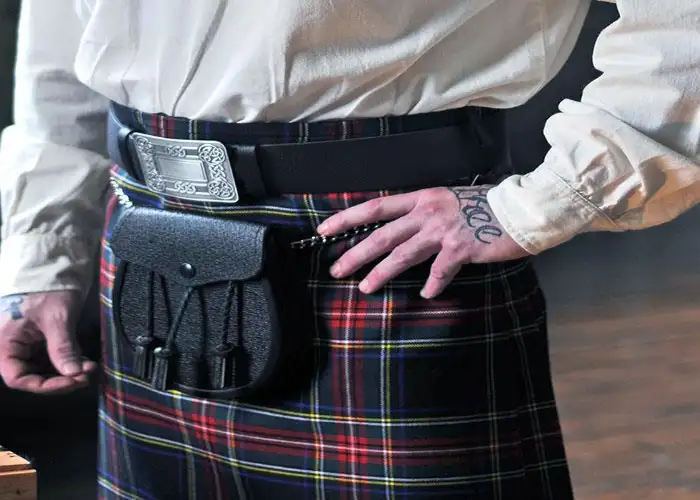
4. Kilt Hose
Kilt hose is long woolen socks worn up to the knee, complementing the kilt and adding to its traditional appearance. These socks are typically made of high-quality wool and are often worn in a colour that complements the tartan of the kilt.
The tops of the kilt hose are turned down to create a decorative cuff, which adds to the overall aesthetic of the outfit. Kilt hoses are not only a traditional accessory but also serve a practical purpose by providing warmth and comfort.
5. Garters or Flashes
Garters or flashes are used to keep the kilt hose in place. These elastic bands wrap around the top of the kilt hose, preventing them from slipping down.
Flashes, which are ribbons that extend from the garters, peek out from beneath the turned-down top of the hose, adding a splash of colour and a decorative element to the outfit. They are often colour-coordinated with the kilt and other accessories, tying the whole look together.
6. Ghillie Brogues
Footwear is an essential aspect of any outfit. When wearing a kilt, Ghillie brogues are the traditional choice. These shoes are distinctive for their long laces wrapped around the ankles and tied at the front.
The lacing style ensures a secure fit and adds a unique flair to the outfit. Ghillie brogues are typically made of high-quality leather. They are designed to be durable, making them a practical and stylish choice for both formal and informal occasions.
7. Sgian Dubh
The Sgian Dubh, promisee-asked-an doo," is a small, single-edged knife that is traditionally worn tucked into the top of the kilt hose on the right leg. Its name means "black knife" in Gaelic. It has a rich history and Scottish traditions. The Sgian Dubh serves both a practical and symbolic purpose.
While it is rarely used today, it remains an important part of the traditional kilt outfit. The handle of the Sgian Dubh is often ornately decorated, making it a striking accessory.
8. Jacket and Waistcoat
A kilt outfit is often completed with a jacket and waistcoat for formal occasions. There are several styles to choose from, with the Prince Charlie jacket being one of the most popular.
This short, tailored jacket is typically worn with a matching waistcoat and a dress shirt, creating a sophisticated and polished look. An Argyll jacket or a simple waistcoat might be more appropriate for less formal occasions. These pieces add structure to the outfit and contribute to its overall elegance.
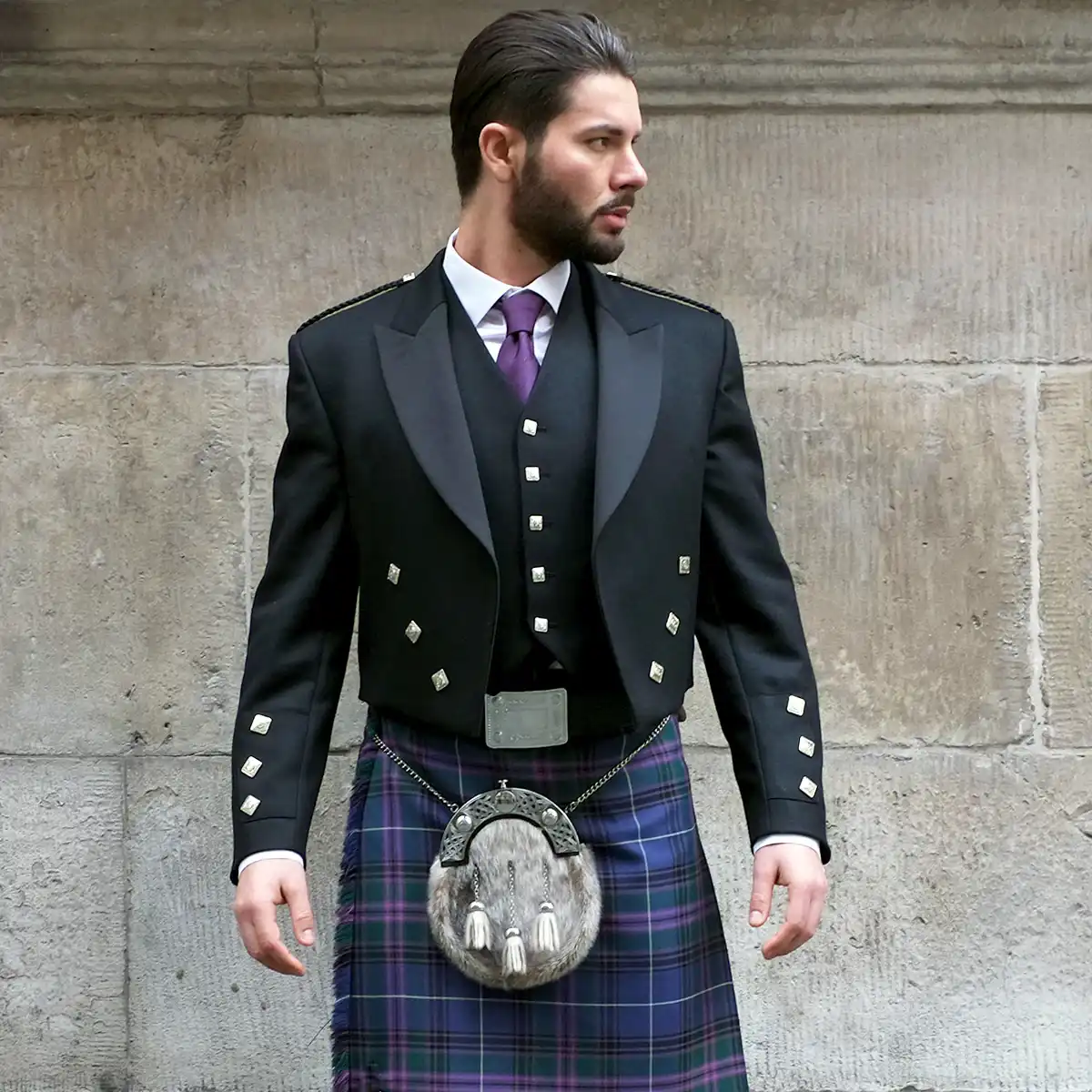
9. Fly Plaid
The fly plaid is a large square of tartan fabric draped over the left shoulder and secured with a brooch. This accessory is typically reserved for formal occasions and adds a dramatic flair to the outfit.
The fly plaid is often made from the same tartan as the kilt, creating a cohesive and visually striking appearance. The fly plaid adds tradition and formality to the kilt outfit when worn correctly.
10. Kilt Shirt
The type of shirt worn with a kilt can vary depending on the occasion. A dress shirt is usually paired with a jacket and waistcoat for formal events.
However, a Jacobite shirt, which features a lace-up front, might be worn for more casual occasions. This shirt style is less formal but still complements the traditional look of the kilt. The choice of shirt can significantly impact the overall feel of the outfit, making it an important consideration.
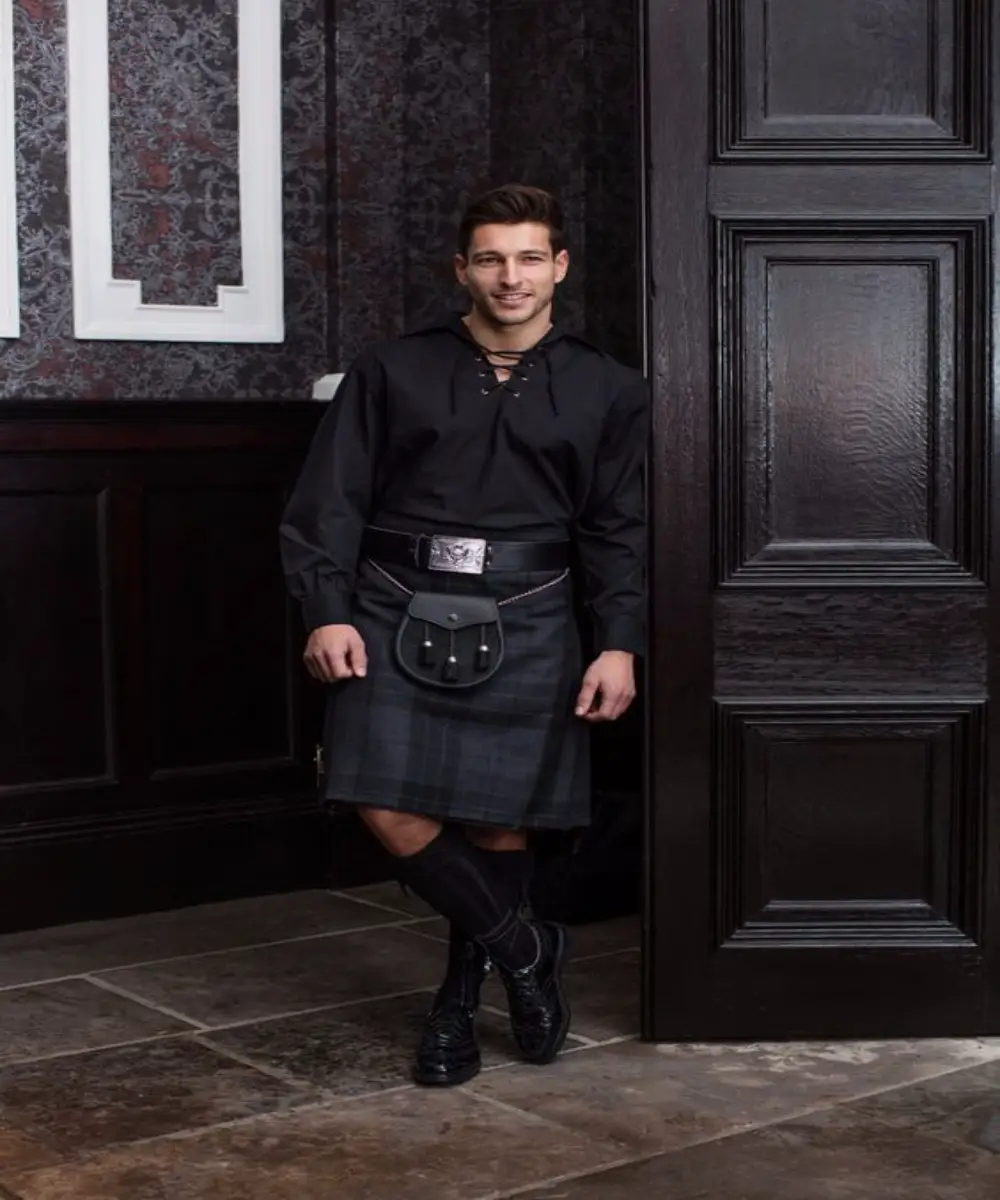
Conclusion
In conclusion, the kilt is a powerful symbol of Scottish heritage. It creates a complete and authentic outfit when worn with the right accessories. Each accessory, from the practical sporran to the decorative kilt pin, plays a vital role in enhancing the overall appearance and functionality of the kilt.
Whether you're dressing for a formal event or a casual gathering, paying attention to these details will ensure your kilt outfit is stylish and true to tradition. By carefully selecting and coordinating these accessories, you can fully embrace the rich cultural significance of the kilt and make a lasting impression at any event.
FAQs
Yes, cufflinks are typically worn with a kilt outfit, especially when paired with a formal dress shirt and jacket. They add a touch of elegance and are a common accessory for formal occasions where the kilt is worn.
While not mandatory, wearing the full set of traditional accessories enhances the kilt’s authenticity and completes the look, especially for formal occasions.
